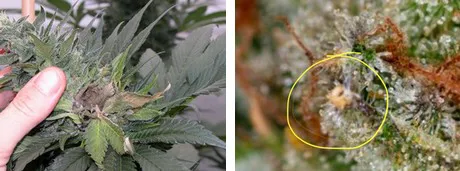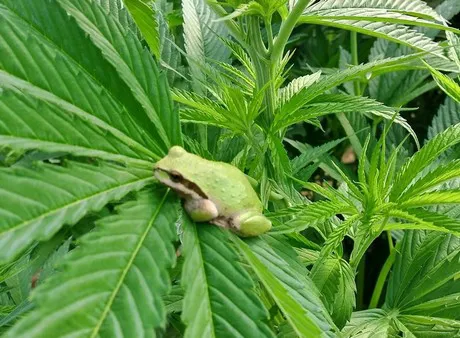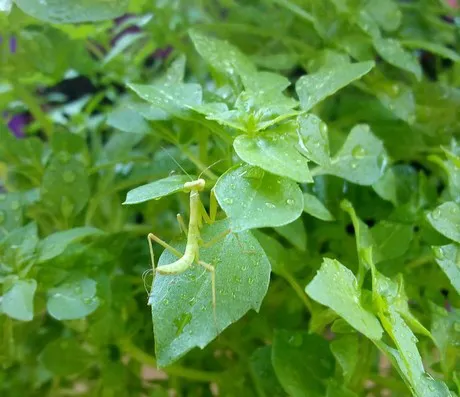The topic of crop protection surely is one of the most interesting to discuss with regards to the cannabis industry. Because of the history of the plant, the current situation of crop protection for cannabis still has some uncertainties. “This is because, before it was legalized and regulated, no research had been done on what might be beneficial for both the plant and the end consumer,” says Danny Kush. “Nowadays, there is constant testing that is bringing new things to the table. In other words, there are a number of companies pulling out new products, which then are deemed unhealthy for the consumer.”
No shortcuts
Because of this lack of research and knowledge among growers, Danny points out that some people have tried to take a shortcut. “I feel that most of the times that some flowers are tested positive to harmful chemicals is because of growers that wanted to find the most cost-efficient way to fight the pest issue. There are companies out there that might be more cost efficient, but as new data and information keep evolving, new, more efficient and suitable solutions are going to come up.”
Cannabis pathogens
According to Danny, the most common pathogens cannabis plants can be affected by are powdery mildew and botrytis. “Generally speaking, when a grower has pest problems it’s because of powdery mildew or botrytis weakening the plant’s system. These are the biggest concerns. However, there are also other pathogens that can be very dangerous either for the plant or for the end consumer.” Danny is talking about Russet mites and E.coli, to be precise. “Russet mites are more intrusive than other types of mites as these are much smaller and resilient to standard IPM systems,” he explains. “One efficient way to fight this is through beneficial insects.” Indeed, Danny remarks that integration with beneficial insects is one of his preferred methods. “On top of this, it is getting increasingly more specific, as you have insects that are made exactly to counter this or that pathogen. This is why it is important to rely on a pest management expert who knows which beneficial insect is necessary to deploy, according to the circumstances.”
 On the left, advanced botrytis: flower and leaf discoloring; on the right, close up on pest and chemical damage
On the left, advanced botrytis: flower and leaf discoloring; on the right, close up on pest and chemical damage
Russet mites
Therefore, when it comes to Russet mites, it is of the utmost importance to select the right beneficial insect. “This can be relatively more expensive, as you have to release more of this because Russet mites reproduce quite fast.” On the other hand, there are pathogens which do not affect the growth of the plant directly, but these are very dangerous for the end consumer. “E.coli is a huge one,” he explains. “I have seen some farms where there was an E.coli outbreak. This was mainly caused by a lack of cleanliness in general: from the grow room to the employees. At the same time, a huge part is also played by the too wide VPD setting, whereby the temperature stays kind of low but the humidity is very high, thus preventing the plant from having a good enough transpiration rate. However, eventually it all comes down to cleanliness: if you follow and apply SOPs, you shouldn’t have these kinds of problems.”
 Happy frog on chemical-free plants only
Happy frog on chemical-free plants only
Addressing a botrytis outbreak
Thus, Danny takes care to explain how he would handle a botrytis infestation that is about to break out. “Botrytis might be caused by excessive humidity and a lack of pruning to the plant, which creates an excessive amount of moisture which in turn enables pathogens to thrive. This might originate from an irrigation line that got burst, condensation drip, or maybe there is a leak,” he says. “Generally speaking, high humidity is one of the main factors for botrytis to be present on the plant.”

“So, the first thing I would do is to thoroughly assess the environmental conditions that led to that, and I would also carefully read the VPD values. Then, it is important to identify buds showing signs of botrytis, which you can see from dead foliar spots and flower discoloring. It is then crucial to cut those buds off by using scissors which have to be immerged in some alcohol after each cut, so as to sanitize the tool; and dispose of rotted bud immediately.In addition to this, I would carry out an extensive defoliation, and possibly providing even supplemental fan airflow to allow for a better air circulation and transpiration.”
 Home-hatched mantis migrated to beneficial plant
Home-hatched mantis migrated to beneficial plant
As time goes on, research will eventually catch up with the demanding regulations. “It has actually already started,” Danny points out. “I think that this process is growing very rapidly. As more legalizing efforts are being made, the whole industry will value even more data collection, as there will be some sort of standards to look at. At the same time, research institutions are finally free to dive deeper into the inner secrets of cannabis, thus allowing growers to acquire that scientific knowledge which is necessary in such a highly regulated industry.”
For more information:
Danny Kush
LinkedIn
YouTube channel
